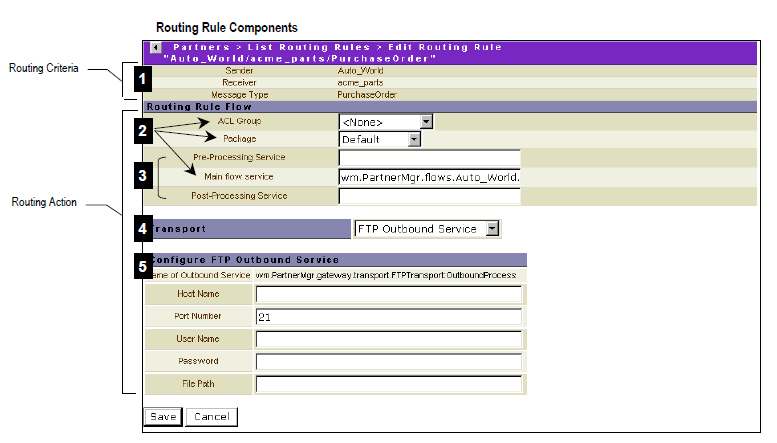

Number | Description |
1 | The routing criteria—the sender, receiver, and message type values that trigger the action specified by the rule. |
2 | The ACL, package, and name of the routing service associated with the rule. This is the actual service that the Partner Manager invokes when it receives a document matching the rule’s routing criteria. The Partner Manager generates this service based on the action parameters you specify when you create a routing rule. You do not build this service manually. |
3 | The names of the pre- and post-processing services, if any, that the Partner Manager will execute before and after delivering the document to its destination. If either of these services fail, the transaction status will change to reflect the service failure. A pre-processing service is a service that you build to perform any work that must be executed immediately before the Partner Manager sends a document out. For example, you might use a pre-processing service to affix a digital signature to a document or mark it with a special postmark. A post-processing service is a service that you build to perform any work that must be executed immediately after the Partner Manager sends a document out. The use of these services is purely optional. |
4 | The transport that Partner Manager will use to deliver the document to its destination. |
5 | Addressing parameters that describe the document’s specific destination. These parameters vary depending on the transport you select. For example, when you choose the Email transport, these parameters specify a host system and a particular mailbox; when you use the IS Service transport, they identify a particular service on a webMethods Integration Server. |